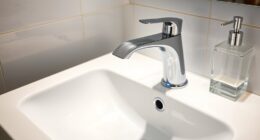Oh, the wonders of a toilet tank! Who knew that such a humble contraption could contain a multitude of parts, each with their own important role to play?
From the fill valve to the flush valve, the flapper to the float ball, and let’s not forget the ever-vigilant overflow tube.
In this article, we embark on a journey to uncover the secrets of these vital components, empowering you with the mastery to understand what makes your toilet tick.
Key Takeaways
- The fill valve regulates water flow into the toilet tank and can experience problems such as incomplete shut-off and loud noise during filling.
- The flush valve controls the release of water from the tank to the bowl during a flush, and regular maintenance is important to prevent weak or incomplete flushes.
- The flapper controls the flow of water from the tank to the bowl during flushing and should be inspected for damage or wear.
- The overflow tube prevents tank overflow, diverts excess water into the bowl, and plays a crucial role in regulating water level and preventing potential water damage. Regular maintenance and troubleshooting are essential for its proper functioning.
Fill Valve
The fill valve is responsible for regulating the water flow into the toilet tank. It’s a crucial component that ensures the tank fills up with the right amount of water after each flush. However, like any other mechanical part, fill valves can encounter problems.
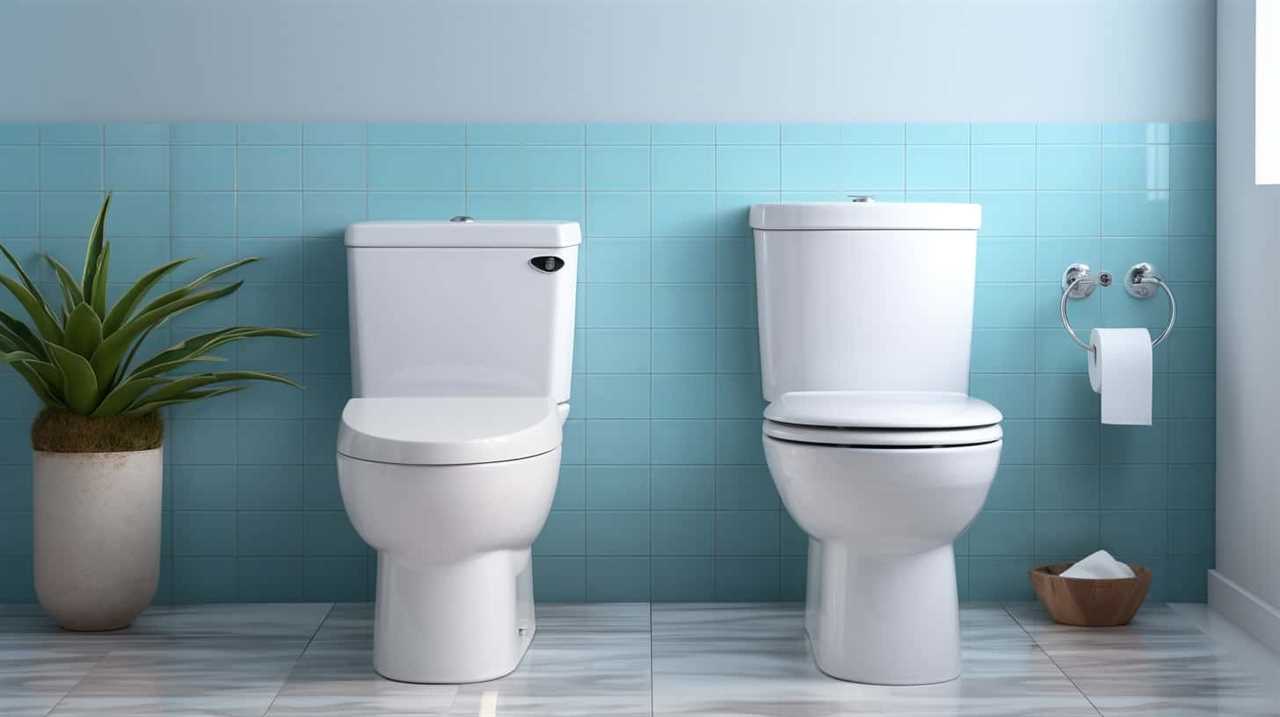
One common issue is when the fill valve doesn’t shut off completely, causing water to continuously flow into the tank. To troubleshoot this problem, you can adjust the float height or replace the faulty valve.
Another problem is when the fill valve makes a loud noise during the filling process. This can be resolved by checking for any obstructions or replacing the valve if necessary.
There are different types of fill valves available, each with its own pros and cons. The traditional ballcock fill valve is durable and easy to maintain, but it can be noisy and prone to water hammer.
On the other hand, the newer float cup fill valve is quieter and more efficient, but it may require more frequent maintenance.
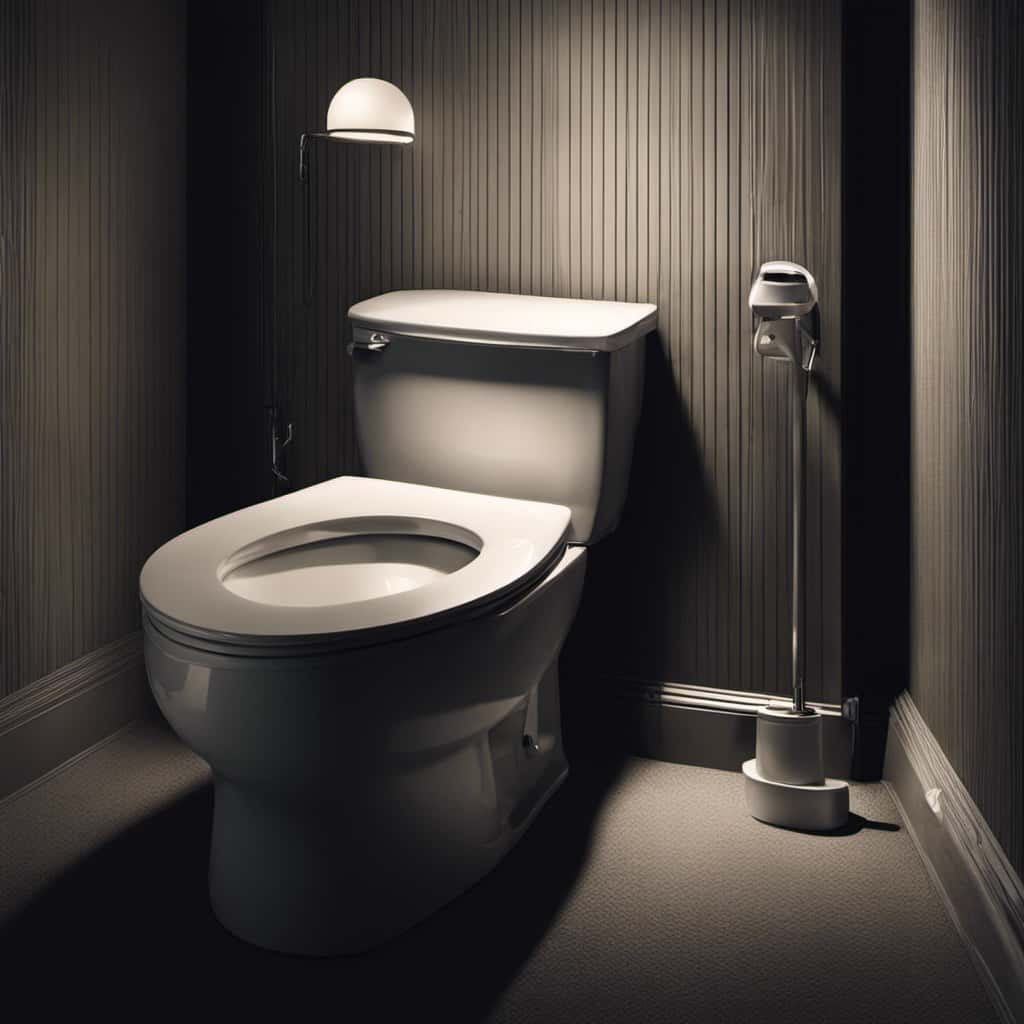
Another option is the pressure-assisted fill valve, which provides a stronger flush and reduces the risk of clogs, but it can be more expensive and complex to install.
It’s important to consider these factors when choosing a fill valve for your toilet tank.
Flush Valve
Moving on to the next part in a toilet tank, let’s talk about the role of the flush valve.
The flush valve is responsible for controlling the release of water from the tank into the bowl during a flush.

Here are three key points about flush valve maintenance and troubleshooting common flush valve problems:
- Proper maintenance: To ensure the flush valve functions smoothly, regularly inspect it for any signs of wear or damage. Clean the valve and surrounding areas to prevent clogs or leaks. Replace any worn-out parts promptly to maintain optimal performance.
- Weak or incomplete flush: If you notice weak or incomplete flushing, the flush valve may be partially blocked or not opening fully. Remove any debris or mineral buildup that could be obstructing the valve. If the problem persists, consider replacing the flush valve.
- Constant running water: A constantly running toilet usually indicates a faulty flush valve. Check for a worn-out flapper or a misaligned valve seat. Adjust or replace the components as needed to stop the water from continuously flowing.
Flapper
Continuing our discussion on toilet tank parts, let’s now delve into the role of the flapper. The flapper is a crucial component of the toilet tank that controls the flow of water from the tank to the bowl during flushing. It’s a rubber or plastic valve that’s connected to the flush valve and covers the flush valve opening.
When the toilet is flushed, the flapper lifts, allowing water to rush into the bowl. After the toilet is flushed, the flapper closes to prevent water from continuously running into the bowl.
Proper maintenance of the flapper is essential to ensure its optimal functioning. Over time, the flapper may deteriorate, become worn, or develop leaks, resulting in issues such as continuous running or incomplete flushing.
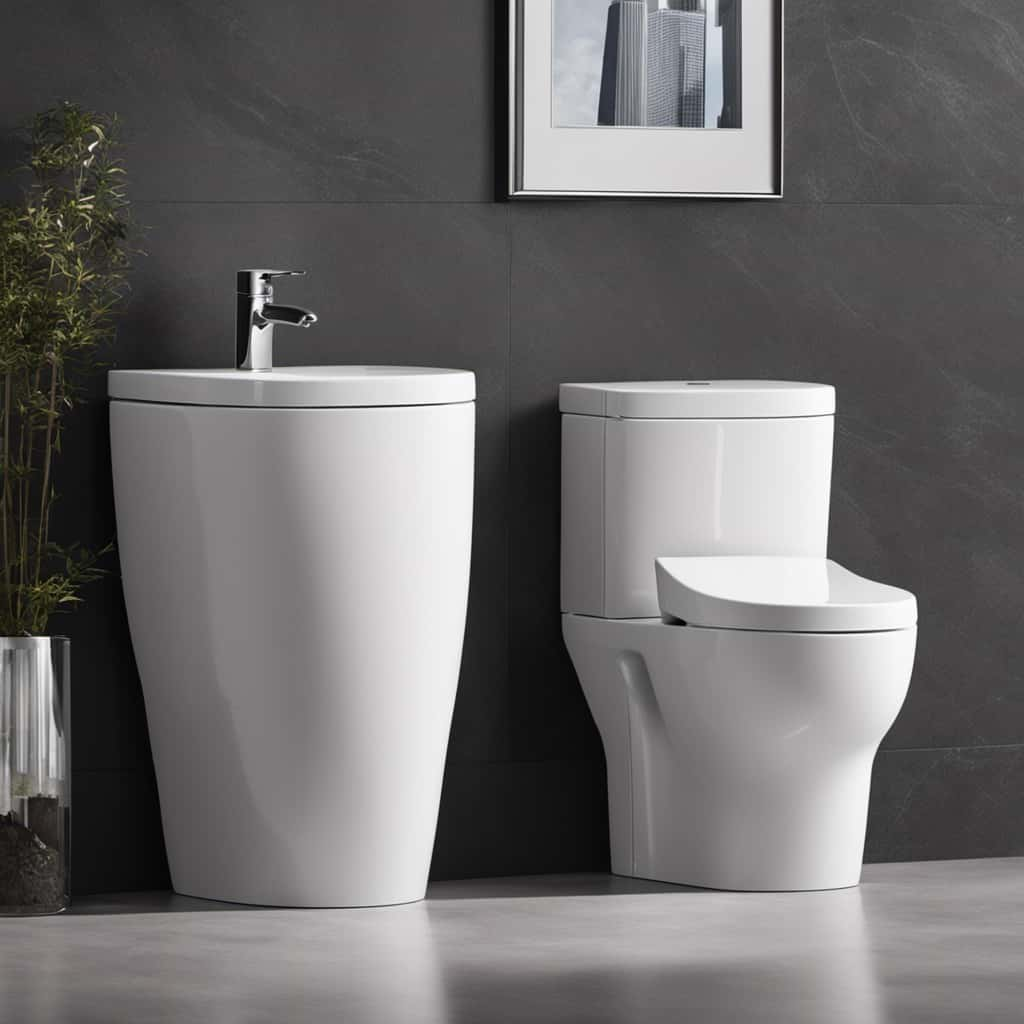
Troubleshooting flapper issues involves inspecting the flapper for any signs of damage or wear, adjusting the chain length, and cleaning or replacing the flapper if necessary.
Regularly checking and maintaining the flapper will help to avoid water wastage and ensure the efficient operation of the toilet.
Float Ball
Now let’s explore the role of the float ball, a vital part in the toilet tank that helps regulate the water level.
The float ball is a buoyant object attached to a lever arm. It works in conjunction with the fill valve to control the flow of water into the tank. Here’s how it works:
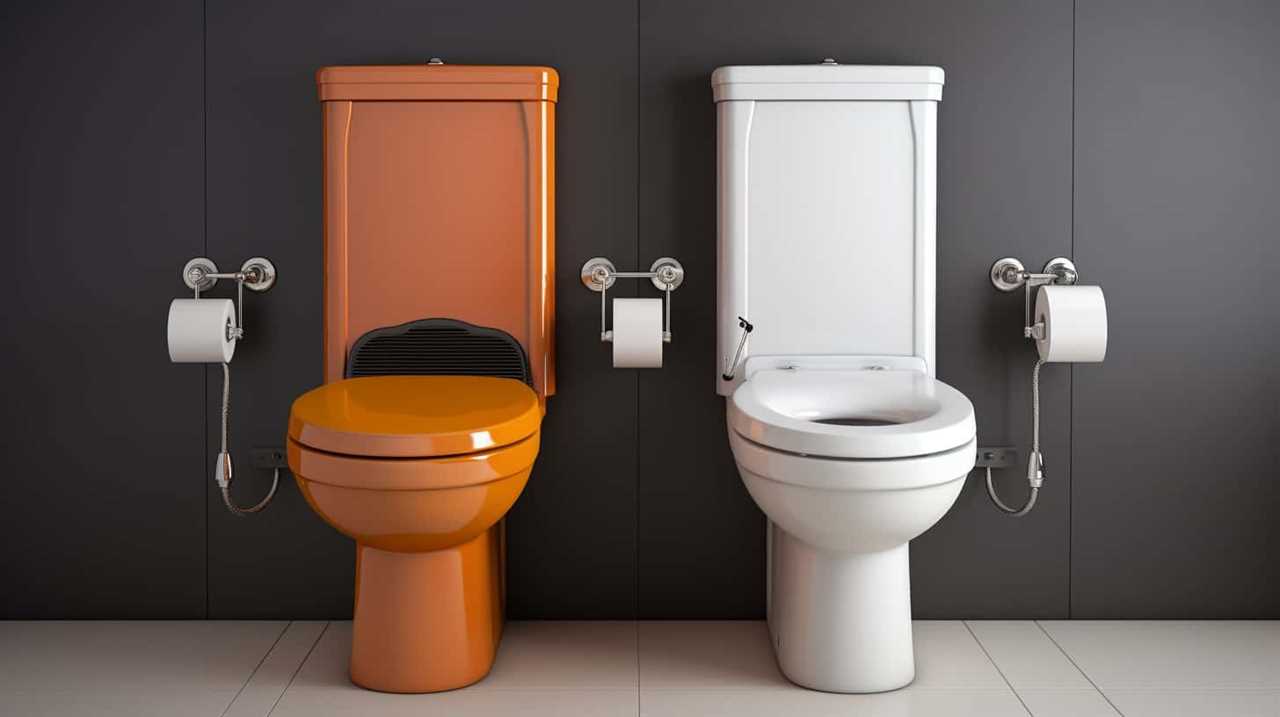
- How does a float ball work in a toilet tank?
- When the tank is empty, the float ball rests on the water surface, pulling the lever arm down.
- As the water fills the tank, the float ball rises with the water level.
- Once the water reaches a desired level, the float ball reaches a certain height, causing the lever arm to shut off the fill valve, stopping the water flow.
- Common problems with float balls in toilet tanks and how to fix them:
- Float ball not rising or rising too high: Adjust the float ball’s position by bending the float arm or adjusting the float ball’s height.
- Float ball not shutting off the fill valve: Check for any obstructions or damage to the float ball or lever arm. Replace any faulty parts if necessary.
- Float ball getting stuck: Clean the float ball and the valve assembly to remove any debris or mineral deposits that may be causing the float ball to stick.
Understanding the function and troubleshooting common issues with the float ball in a toilet tank will help ensure the proper functioning of your toilet’s water level regulation.
Overflow Tube
The overflow tube’s main function is to prevent the tank from filling with an excessive amount of water. It is a crucial component in maintaining the proper water level in the toilet tank.
The purpose and function of the overflow tube in a toilet tank can be summarized in the following table:
| Purpose | Function |
|---|---|
| Prevents tank overflow | Diverts excess water into the bowl |
| Regulates water level | Controls the amount of water in the tank |
| Prevents damage | Avoids potential water damage to the bathroom floor |
Common issues related to the overflow tube include water continuously running into the bowl, water overflowing from the tank, or a weak flush. Troubleshooting tips for these issues involve checking for a faulty flapper valve, adjusting the float ball, or clearing any blockages in the tube. Regular maintenance and inspection of the overflow tube can help ensure efficient toilet operation and prevent potential water damage.
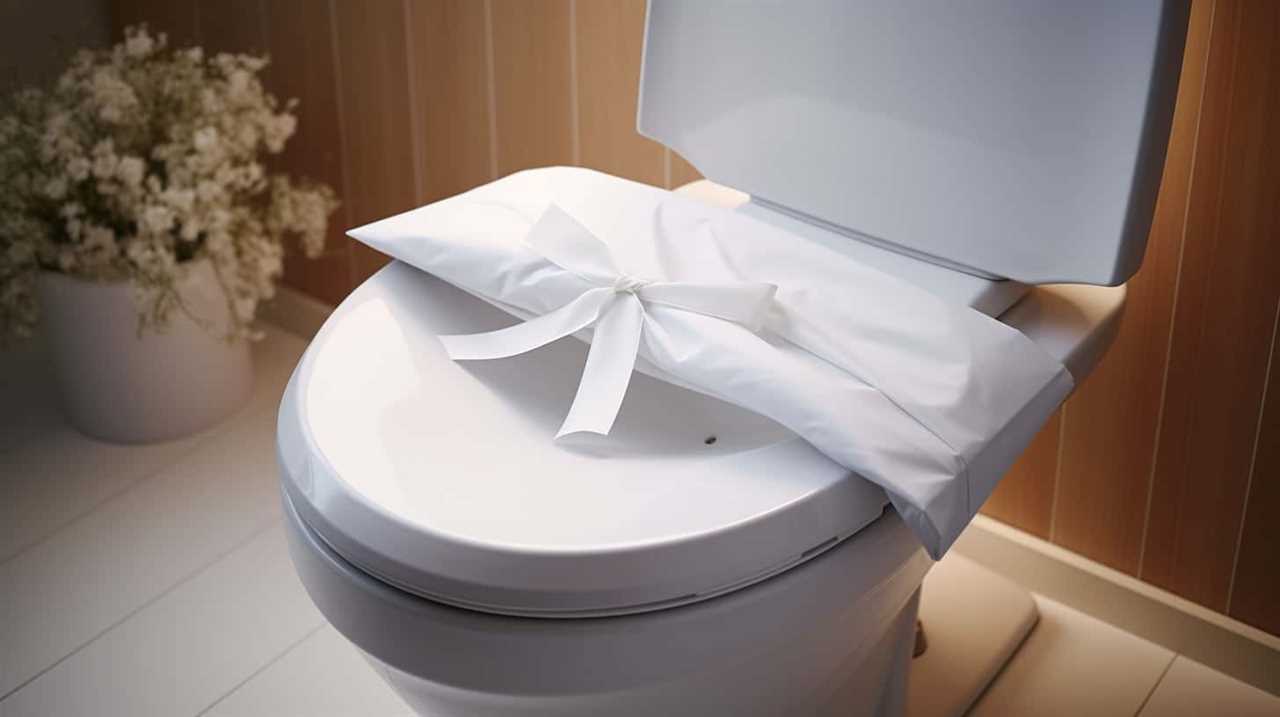
Frequently Asked Questions
How Do I Adjust the Water Level in My Toilet Tank?
We adjust the water level in the toilet tank by using the water level adjustment valve. If the water level is too low or high, it can cause issues like low water pressure or toilet leaks. Troubleshooting these problems is essential for maintaining a functional toilet.
What Are Some Common Signs That the Fill Valve Needs to Be Replaced?
When troubleshooting toilet leaks, common signs that the fill valve needs replacing include low water pressure and continuous running. Adjusting the water level in the tank may also be necessary to prevent further issues.
Can the Flush Valve Be Replaced Without Removing the Toilet Tank?
Yes, the flush valve can be replaced without removing the toilet tank. It is a common maintenance task for troubleshooting toilet tank leaks. We can provide technical guidance for this process.
Is It Necessary to Replace the Flapper Regularly?
Regularly replacing the flapper in a toilet tank is important for proper functioning. It helps prevent leaks and ensures efficient flushing. Additionally, using a dual flush system provides the added benefit of water conservation.
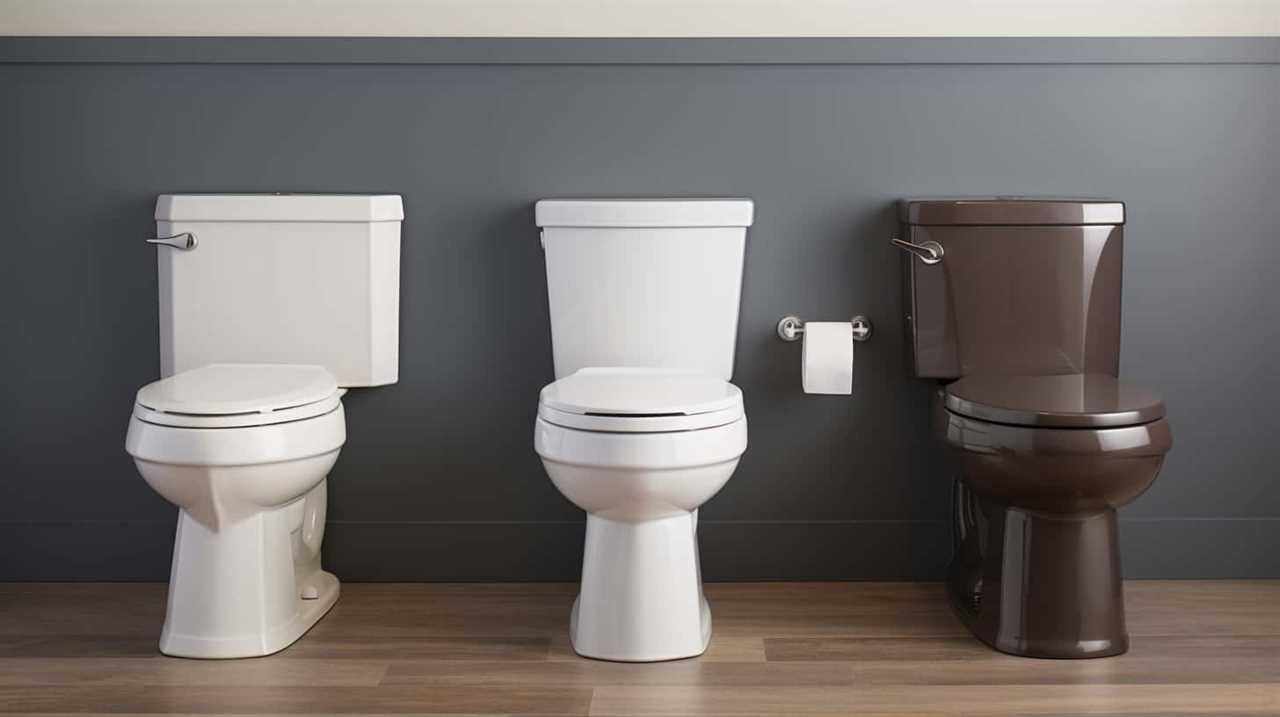
What Can Cause the Float Ball to Malfunction?
When troubleshooting float ball issues, it’s important to identify potential malfunctions. Factors like water level, ball alignment, or damaged components can cause the float ball to malfunction, affecting the tank’s functionality.
Conclusion
In conclusion, understanding the different parts of a toilet tank is essential for maintaining its functionality.
While some may argue that learning about these components is unnecessary, it’s important to remember that small issues with these parts can lead to significant water wastage and costly repairs.
By familiarizing ourselves with the fill valve, flush valve, flapper, float ball, and overflow tube, we can ensure efficient and effective toilet operation.
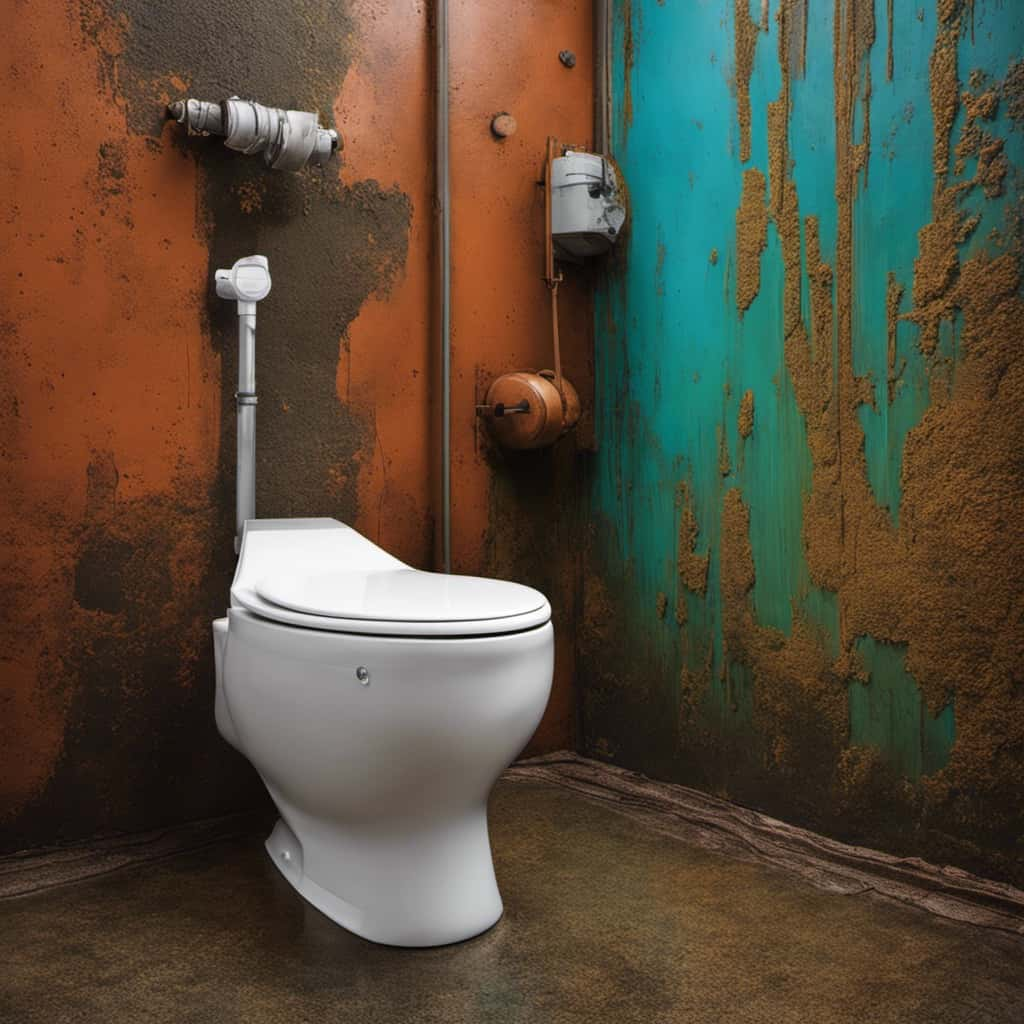
This will help conserve resources and save money in the long run.






